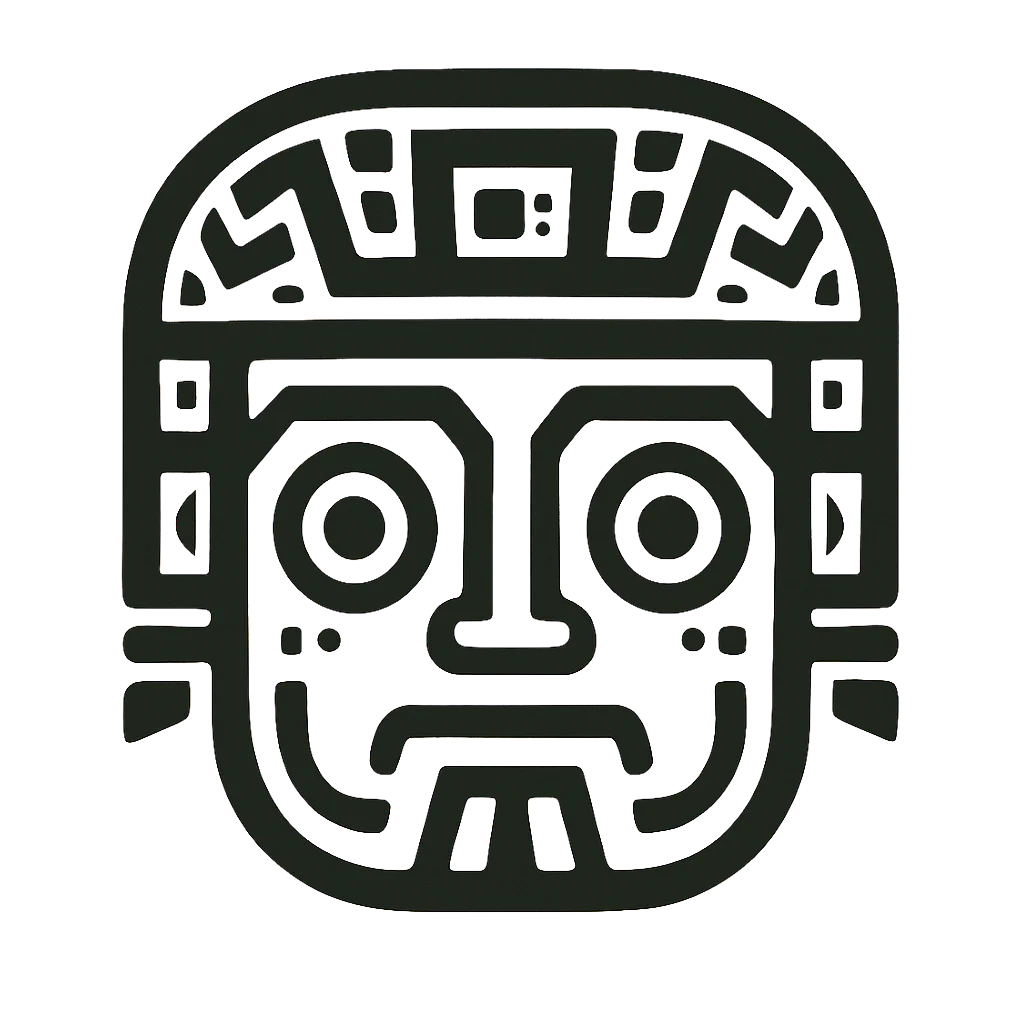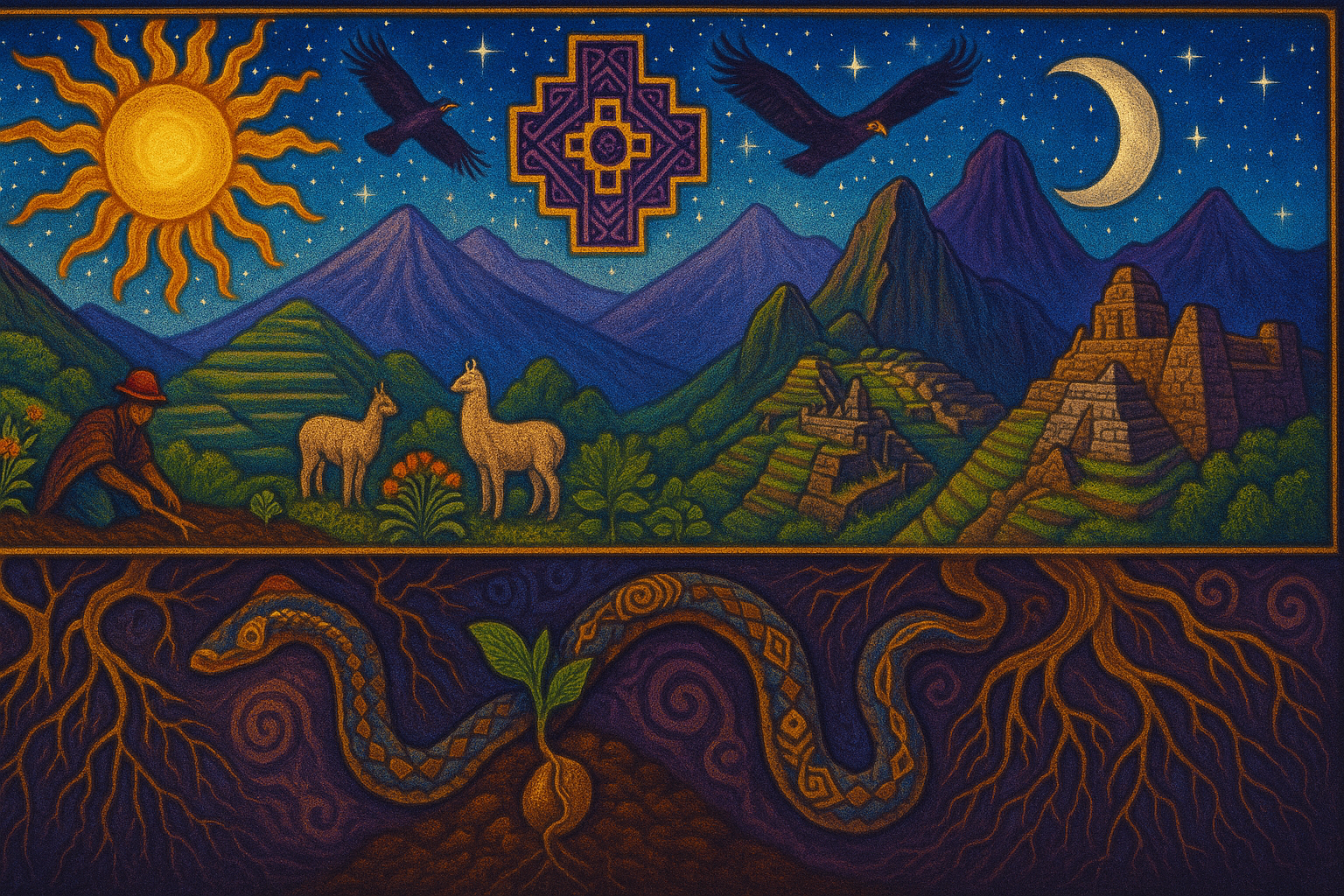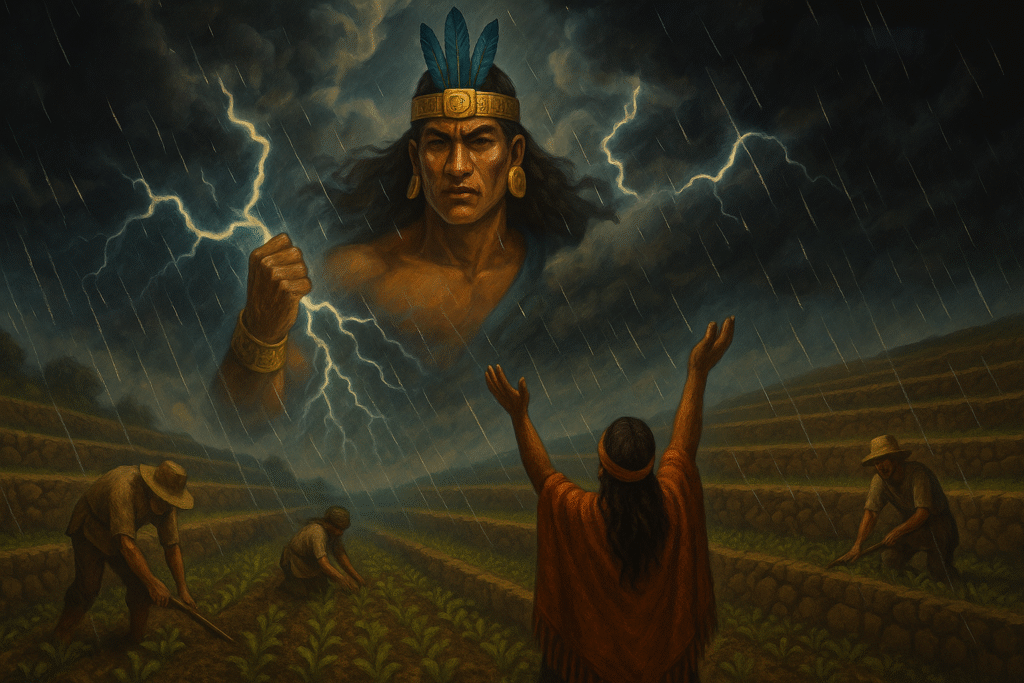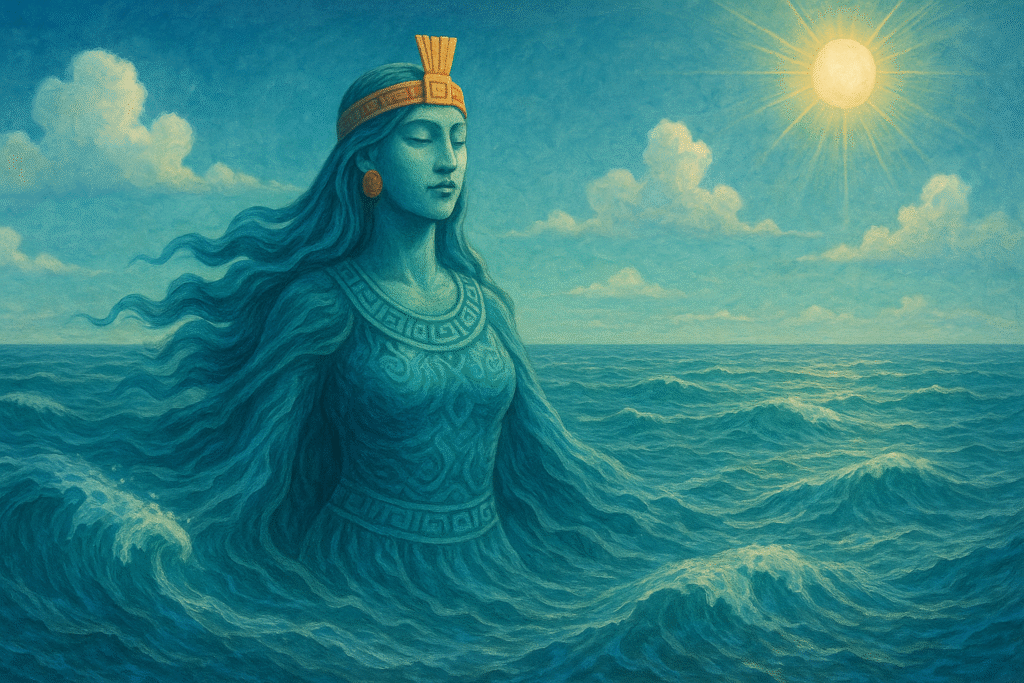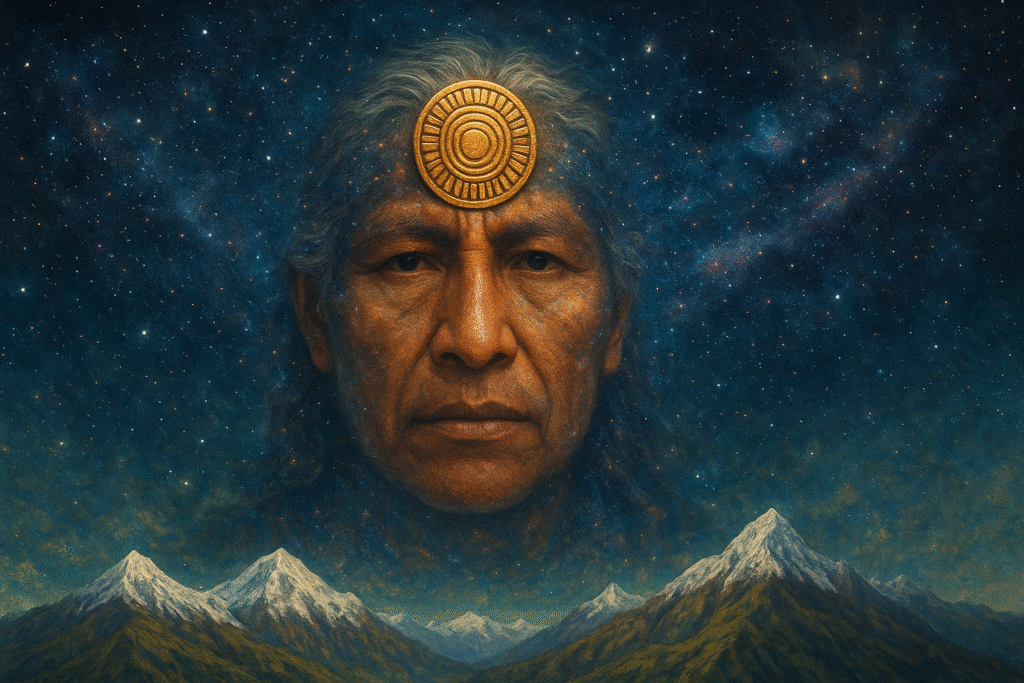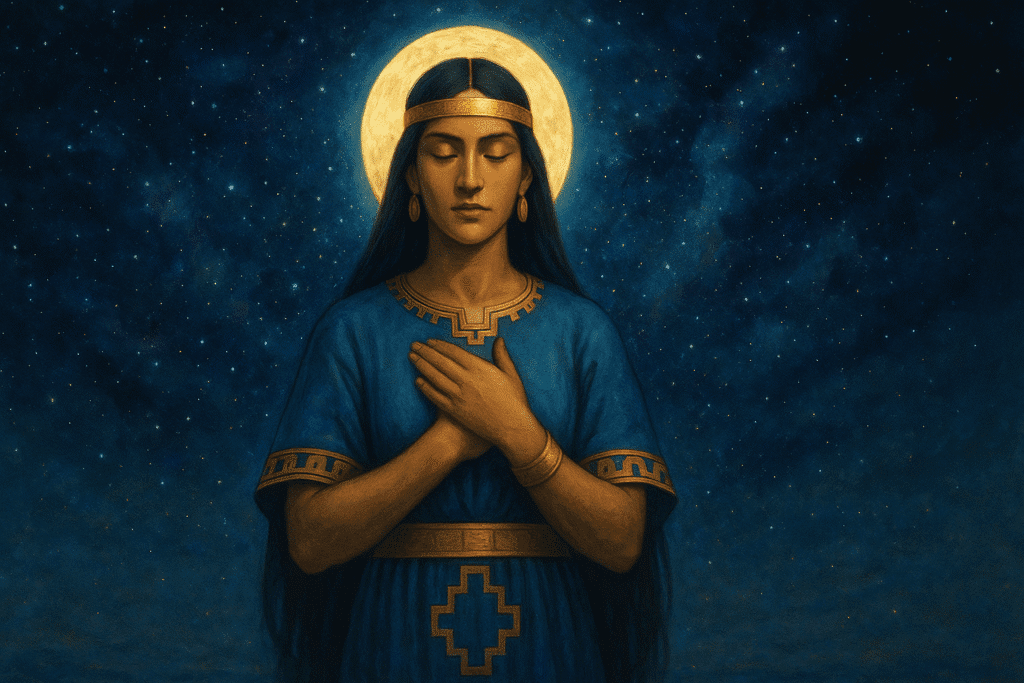For the Andean peoples, the universe was not divided into heaven and earth, but rather comprised three interconnected worlds known as the Three Andean Worlds or the Andean Trilogy. Each of these planes had its own energy, guardians and role in maintaining the balance of the cosmos.
These worlds — Hanan Pacha, Kay Pacha and Ukhu Pacha — were not considered separate places, but rather simultaneous dimensions that coexist within every human being, every mountain and every cycle of nature. Grasping this concept is akin to opening a door to the ancestral wisdom that continues to guide life in the Andes to this day.
Join us on a journey through the three Andean worlds, a sacred vision that reveals the Inca and their ancestors' understanding of life, death, the Earth and the spirit.
🌌 Hanan Pacha – The world above
Hanan Pacha is the highest of the three Andean worlds. Not only does it refer to the physical sky, but it also represents a symbolic and spiritual space where the purest and most luminous forces of the universe dwell. It is a world of divinity, intangibility and eternity.
For the Andean peoples, especially the Quechua and Aymara, Hanan Pacha was not an ethereal paradise, but an active and present force that influenced daily life. It could be engaged with through rituals, respect and observation of natural cycles.
What does Hanan Pacha mean?
In Quechua:
- Hanan = higher, above, elevated
- Pacha = world, time-space
Together, they represent the concept of an "upper world", not in a physical, vertical sense, but on a vibrational, spiritual and symbolic level. Hanan Pacha represents cosmic order, universal harmony and the sacred principles that guide human beings.
Beings and energies that inhabit Hanan Pacha
This higher world is inhabited by beings of light and guidance, considered protectors and sources of wisdom. Among them are:
- Inti (the sun): source of life and energy, male patron and central figure of the agricultural and spiritual calendar.
- Mama Killa (the moon): protector of women, symbol of the cycle and of time.
- Illapa (lightning and thunder): god of rain and fertility, bringer of water from the sky.
- The Andean constellations: The Incas recognized figures in the dark spaces of the Milky Way (such as the Blue Flame or the Black Fox), not just in the stars. These constellations guided agriculture and rituals.
- Condor: sacred bird that connects worlds, symbol of the free spirit that flies between the divine and the earthly.
In many traditions, it is also believed that righteous souls ascended to Hanan Pacha after death, to join the stars and accompany the living from above.
Connection with the environment and with human beings
Hanan Pacha is not a distant world: it is present in the sun that shines, in the rains that fall, in the cycle of the seasons. The Andean people carefully observed the skies to make important decisions about agriculture, travel, or rituals.
Additionally, many sacred Inca constructions, such as Machu Picchu, Sacsayhuamán and Coricancha, were aligned with solar or lunar phenomena, showcasing their profound knowledge of astronomy and spirituality. For the Incas, architecture was also a means of communicating with Hanan Pacha.
What does Hanan Pacha symbolize?
- The spiritual guide: it is the plane where universal wisdom resides.
- The connection with the divine: both the gods and the ancestors who transcended.
- Light and balance: everything that gives direction and meaning to human life.
On a personal level, connecting with Hanan Pacha meant aligning with one's highest self, which involved acting with respect, ethics and awareness. For this reason, many offerings and prayers were raised to the sky, especially at sunrise and sunset, when the sun's appearance changed.
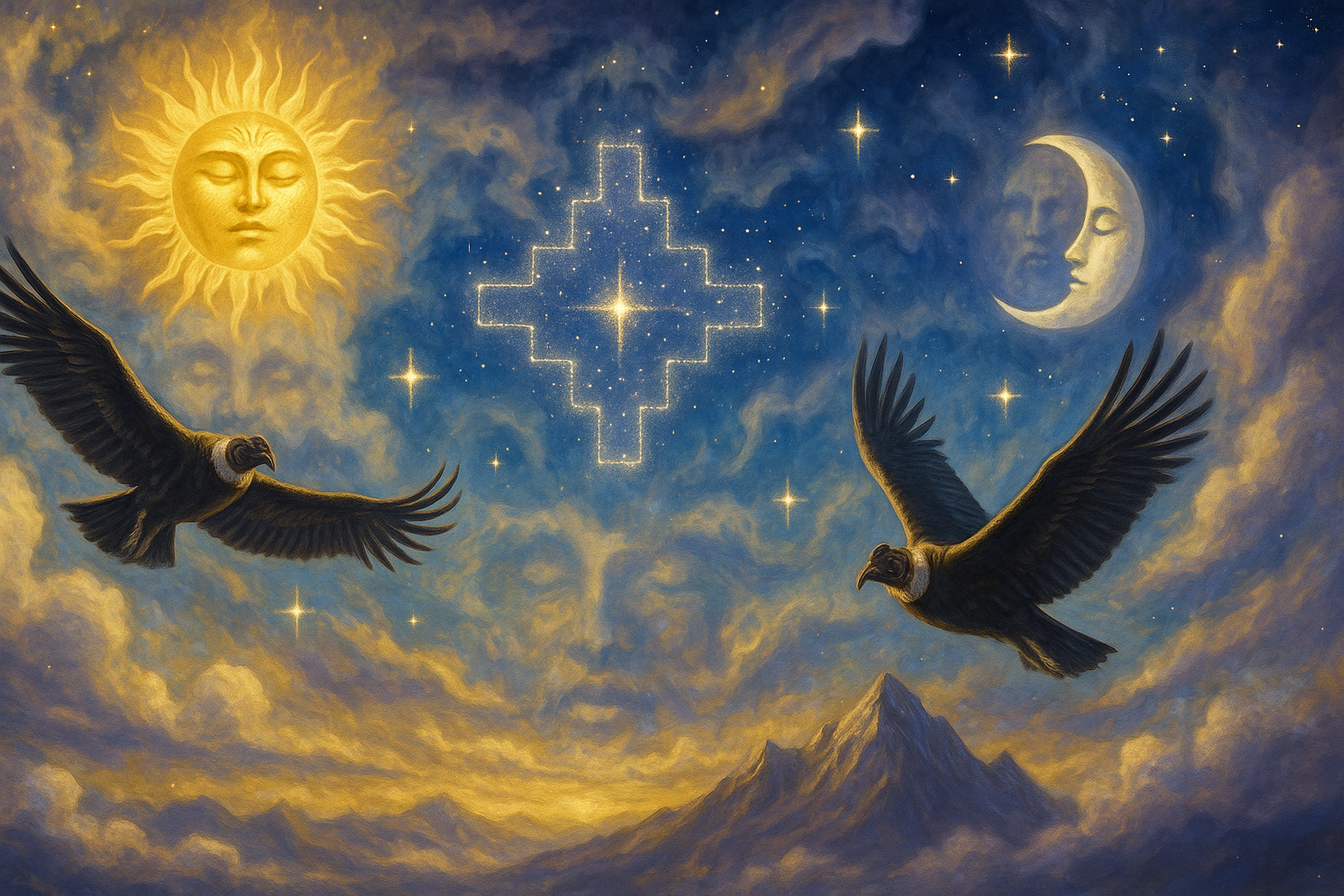
⛰️ Kay Pacha – The present world
Kay Pacha is the present world, of human experience and everyday life. It is the realm in which life as we know it plays out: the environment we walk on, the air we breathe, the relationships we form and the cycles we experience.
Unlike Hanan Pacha (the spiritual and celestial realm) and Ukhu Pacha (the hidden and inner realm), Kay Pacha is the visible and tangible world. However, it is no less sacred.
What does Kay Pacha mean?
In Quechua:
- Kay = here, present
- Pacha = world, time-space
Together, Kay Pacha translates as "this world" or "the world of now". It is the realm in which the energies of the gods and the earth intersect, and where human beings must act to preserve the equilibrium between them.
What happens at Kay Pacha?
This is the realm of active life: birth, growth, work, love, celebration, sowing, harvesting and building community. However, it is also where we face the challenges of imbalance: disease, conflict, injustice and natural disasters.
In the Andean vision, Kay Pacha is the realm in which human beings act. It is here that one becomes aware of one's role in the universe and learns to act respectfully towards other worlds.
Every action we take towards people, animals, mountains, water or the Earth has a consequence. This is why the concept of reciprocity (ayni) is so important: if you give respectfully, you will receive in abundance; if you exploit or disrupt the balance, that will come back to you, too.
The symbol of the puma: energy, strength, and wisdom
The cougar is the sacred animal that represents Kay Pacha. It is associated with:
- The life force
- The wisdom of instinct
- The ability to move between the spiritual and the earthly
He was considered a powerful guide and protector. In Inca Cusco, the city itself was designed to resemble a puma, with Sacsayhuamán forming its head. This was no coincidence; it symbolised the power and vitality required by Kay Pacha to maintain order in the world.
The role of human beings in Kay Pacha
Living in Kay Pacha implies a great responsibility: we are the bridge between the higher (Hanan Pacha) and the lower (Ukhu Pacha). Our task is to maintain the balance between the two through our decisions, our relationships, and our customs.
According to the Andean worldview, everything is interconnected. There is no distinction between the material and the spiritual, or between the individual and the collective. What we do here affects all levels of existence. This is why many Andean rituals aim to 'harmonise the Kay Pacha': purification ceremonies, acts of thanksgiving, dances, agricultural celebrations and offerings are not just customs, but active ways of maintaining universal balance.
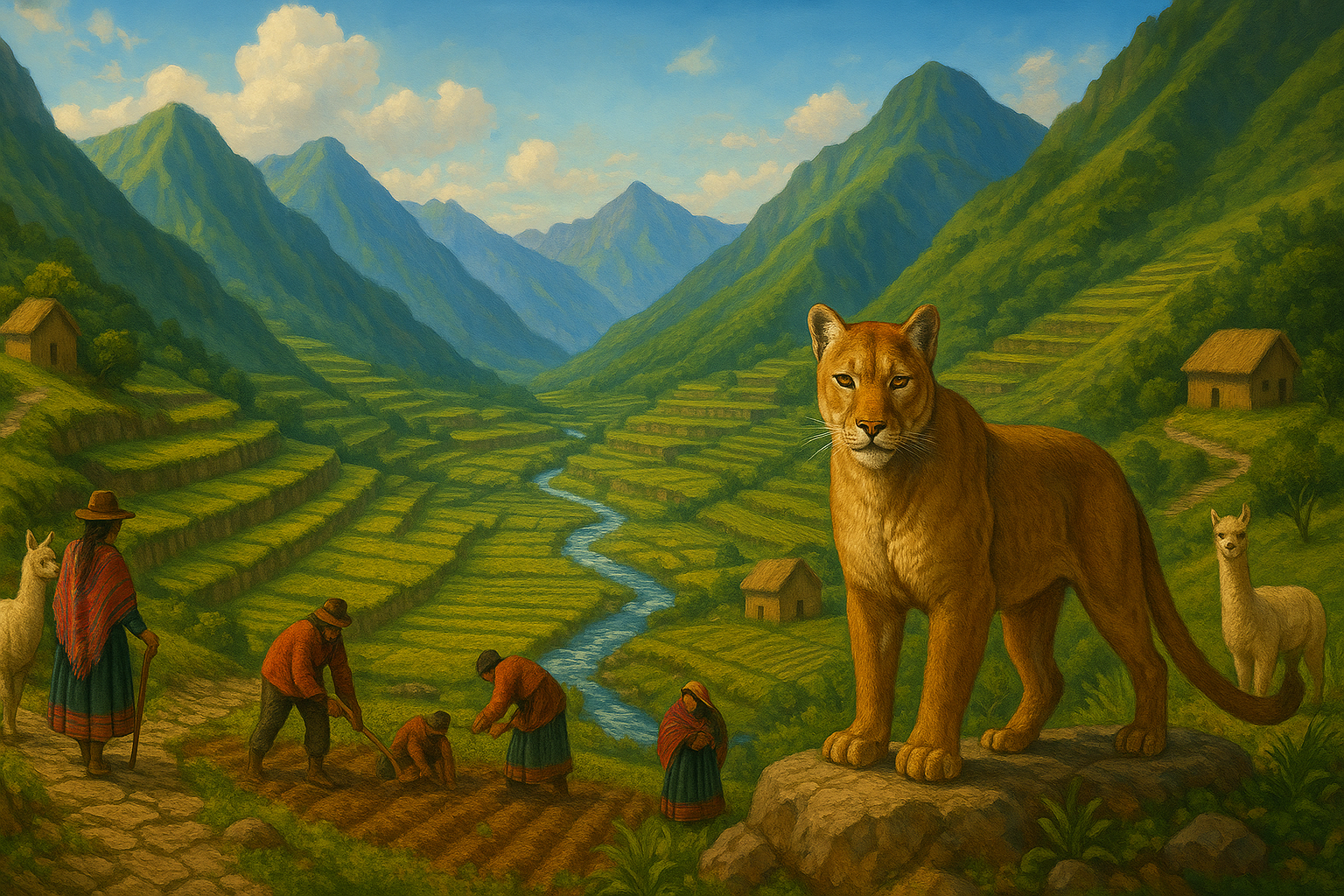
🐍 Ukhu Pacha – The underworld
In the Andean worldview, nothing truly dies; everything transforms. That is the essence of Ukhu Pacha, the world below, the deep plane where memory, unseen energy, and everything yet to be born reside.
Unlike in other cultures, where the underworld is associated with punishment or evil, the Andean peoples view Ukhu Pacha as an essential part of life, connected to fertility, ancestors, and the cycle of renewal.
What does Ukhu Pacha mean?
In Quechua:
- Ukhu = inside, deep, internal
- Pacha = world, time-space
Ukhu Pacha is the “inner world”, not only geographically (such as the subsoil or caves), but also symbolically: it is the plane of what cannot be seen but influences everything. The hidden is not synonymous with evil, but with power that demands respect.
What's in Ukhu Pacha?
This plan is linked to:
- The fertility of the earth (where seeds germinate and roots grow)
- The world of ancestors (spirits that remain present in the life of the community)
- Underground spaces (caves, springs, sacred fountains)
- The cycles of death and rebirth
Latent energy is stored in the Ukhu Pacha like an underground seed that, although invisible, contains all the strength needed to sprout. It is also the place where profound knowledge resides — the kind that is not acquired through words, but through experience, ritual or dream.
Certain caves, springs, and underground spaces were considered portals to this world.
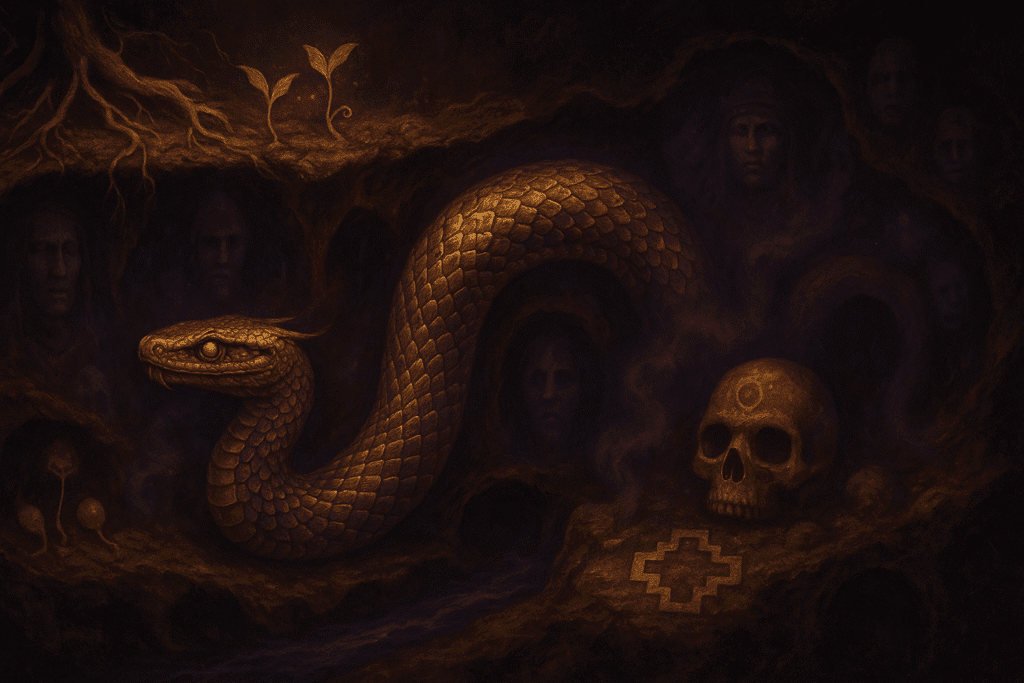
🌐 How are these three worlds represented?
The Incas used three sacred animals to represent these planes of existence:
- Condor: symbol of Hanan Pacha. It flew high and connected with the celestial.
- Cougar: symbol of Kay Pacha. Agile, strong, and wise, it represents active life.
- Snake (Amaru): symbol of Ukhu Pacha. It glides across the earth and represents the deep, the hidden.
This symbolic trio appeared not only in their myths, but also in their temples, ceramics, and ritual paths. It is common to see these figures carved in stone at many archaeological sites in Cusco and the Sacred Valley.
🧿 Why is this worldview important?
It shows a different way of understanding life. Rather than separating the material from the spiritual, the Andean people integrated everything into a system in which:
- Nothing exists on its own.
- Everything is connected to everything else.
- Balance is not static, but rather is built day by day through concrete actions: caring for the earth, giving thanks for water, respecting elders, sharing with the community.
This way of seeing the world is still prevalent, particularly within Andean communities, where rituals, agricultural activities and festivals are performed with the intention of maintaining harmony between the three worlds.
Understanding the three Andean worlds is more than a history lesson: it is an invitation to see the world through different eyes, where the earth has a soul, the sky listens, and the depths hold memories.
